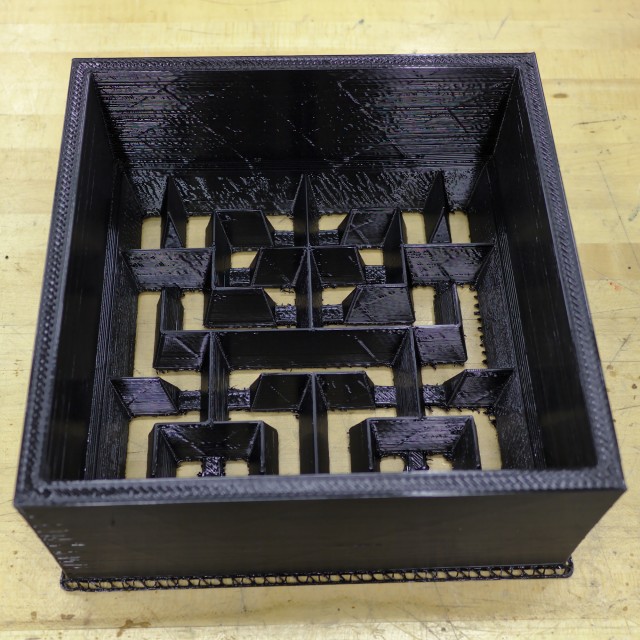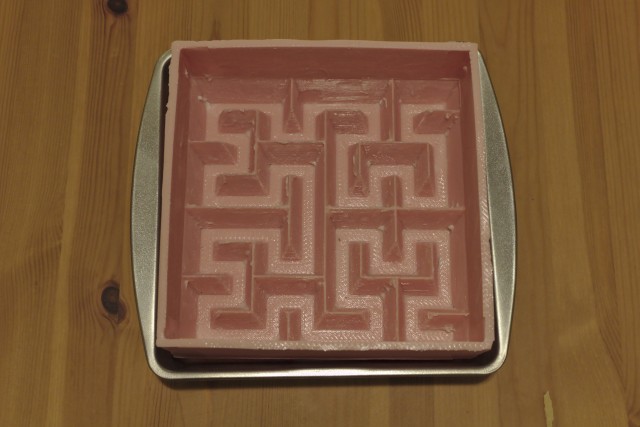
Via J. Peterson’s blog – Apple’s recently introduced Mac Pro features a distinctive pattern of holes on the front grill… that pattern is very appealing, and re-creating it is a fun exercise.
The best clue about the pattern comes from this page pitching the product. About halfway down, by the heading “More air than metal” is a short video clip showing how the hemispherical holes are milled to create the pattern.

With a bit of trig, you can find half the horizontal spacing x by using the right triangle formed by that line, x and the side of the equilateral triangle. The angle from the vertical center line to the equilateral triangle edge is half of π/3, π/6. So, x=2r tan(π/6) and 2x is the horizontal spacing of the circles.
The blog goes on to use trigonometry to calculate the opposite hole positioning and with some pixel counting, some thickness estimates.
So to CAD this up, all you need to do is start with a rectangular block of thickness t, and use the formulas above to place the centers of the spheres (with diameter 2r) on the front and back of the block.
If you just want to quickly print or look at the result in 3D, there are some sample STL files posted on Thingiverse.









